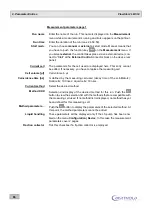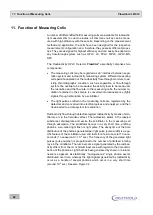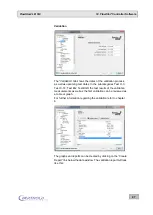
11. Function of Measuring Cells
FlowStar2 LB 514
94
The light signals are detected and amplified in the flow-through detector by
2 photomultipliers (PM) located on both sides of the measuring cell. The
coincidence circuit separates and eliminates all single photon events (i.e.
noise and chemiluminescence) of the multiphoton signals generated by the
radioactivity which excite both PM’s. Signals which excite both PM’s “sim-
ultaneously” are so-called coincident pulses which serve as useful signal
for the radioactivity detector.
The radiation generated by the radioactivity is classified according to
type
quantity and
energy
The
type of radiation
tells us whether we are dealing with alpha, beta,
gamma emitters, etc.
The
quantity of radioactivity
is indicated in the following units:
Becquerel (Bq = dps = decays per second).
dpm (dpm = decays per minute, 1 Bq = 60 dpm).
Curie (Ci = 3.7 · 10
10
Bq or dps).
These quantities describe how many decays per unit of time (second or
minute) take place in the sample. For nuclides with shorter half-life periods
(e.g.:
3
H,
125
J,
99
Tc), a decay correction should be carried out to determine
the actual, absolute activity.
The radiation
energy
is dependent upon the nuclide and is given in MeV
or KeV. The radiation energy of a nuclide provides information on the pulse
height to be expected
– depending on the scintillator used. The discrimina-
tor at the measuring system has to be set based on the expected pulse
height.
















































